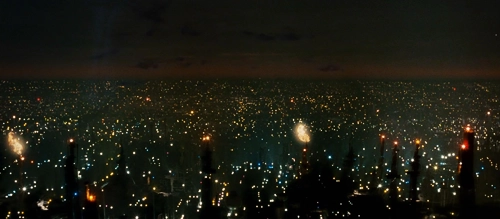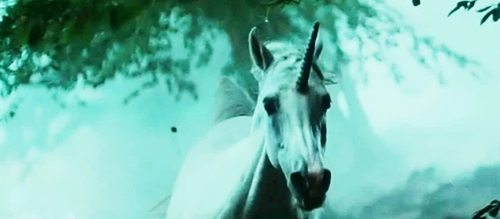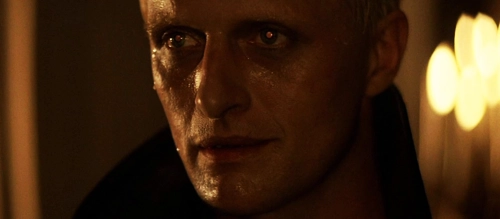10 Best Blade Runner Moments
5. Hades Landscape

Text appears on screen to start our film. It explains Los Angeles, the replicants, and the blade runners. After that, our first proper shot is a massive field-like expanse of lights. Towers pierce the skies, explosions shooting off, fire belching up. Smoke rises. Human advancement is reliant upon creating a hellish, artificial world, and it must do so by burning. This would be dubbed by the creative team as the Hades Landscape, a name that has filtered into common tongue and is a reference to any large expanse of industrial buildings and estates.
Were this not the opening shot of the film, it might go relatively unnoticed. Indeed, we never return to this specific skyline again, keeping very much inside Los Angeles (for the Final Cut at least; older versions took unused footage from The Shining for a happy ending getaway as Deckard and Rachel escape to the greenery out of the city). With its fires exploding, a car or two flying through it, and the iconic shot of a jet of fire reflected in the curvature of an eyeball, the image has come to transcend the film itself. It is mass industrialisation, hell on earth, the underworld come up to show itself.
4. Memories of Green

In the ending times of making Blade Runner, Ridley Scott was already planning his next film. This would be the 1985 fantasy film Legend, starring Tim Curry as a magnificent devil in one of the best demon designs ever put to screen. In this, he was shooting footage of unicorns running through the woods. Although this footage did not make it into the original cut, it was eventually added into the Director’s Cut in the early nineties, with the full version being released in the Final Cut in 2007. As it is, we have a combination of the unicorn dream sequence, with Deckard finding an origami unicorn left by Gaff. For obvious reasons, both of these scenes tie in together, so we’re slightly cheating here and putting them all in one.
This moment, and the subsequent paper unicorn, completely changes the entire context of the film. It heavily suggests (without explicitly stating) that Deckard may be a replicant. In which case, he kills his own kind. His entire understanding of the world is suddenly changed, and with it our entire understanding of right and wrong in the world of the film flips. It is no longer as it once was, and the eerie postmodern world where nothing is certain comes to life. That the origami unicorn has now become an icon for the film on various pieces of merchandise shows the power of the image. Added to that, a unicorn is by definition not real, a fantasy. A fantasy creature seen in a fantasy dream, possibly by an individual whose entire sense of self is a fantasy. There are fans of the original cut with its voice-over narration from Harrison Ford, but nobody would argue that this dream sequence drastically alters the complexity of the film and its themes for the later versions.
Recommended for you: More Human Than Human: An Introduction to Cyberpunk
3. To Meet One’s Maker

Batty managing to find the winning solution to Sebastian’s chess game against Tyrell (a fairly simple two-move checkmate, so not that hard, but the film plays it off as if it’s the hardest solution ever devised), sets him up as an equal to Tyrell. Intellectually, they are on the same level. They are both great problem solvers. And yet, Batty goes to Tyrell to get answers, to find a way to keep himself going, seemingly knowing that this can never be done. Despite his suggestions on how to alter his genetic makeup, ‘You were made as good as we could make you.’ ‘But not to last,’ is Batty’s reply. It’s not fair, but he has seemingly always known this was the case.
The scene, of course, recalls Frankenstein, as seemingly any story about life being artificially created does. A confrontation symbolising man and God. And here in this scene is the burning rage of mankind made visual, humanity slaying its higher power in anger for making it lesser and subservient to rules that cannot be changed. The simple words that Batty speaks, ‘I want more life, Father,’ are haunting and terrifying at the same time because they are some of the most human words possible, spoken by one that both is and is not human. In the final shot of the sequence, Batty is descending in the elevator again, his face a mix of horror, hatred, and complete existential crisis. He’s held God hostage, slayed him with his own hands, and even usurping the Almighty cannot stave off the blackness coming ever closer. What do we do now? The scene is theological, literary, and horrifically human all at once.

